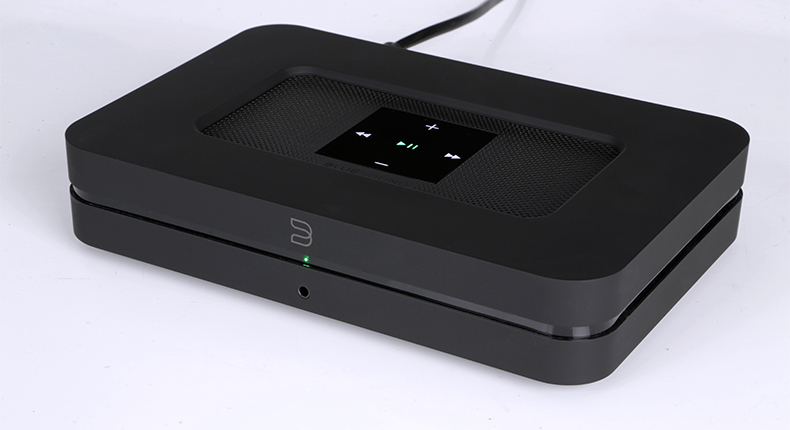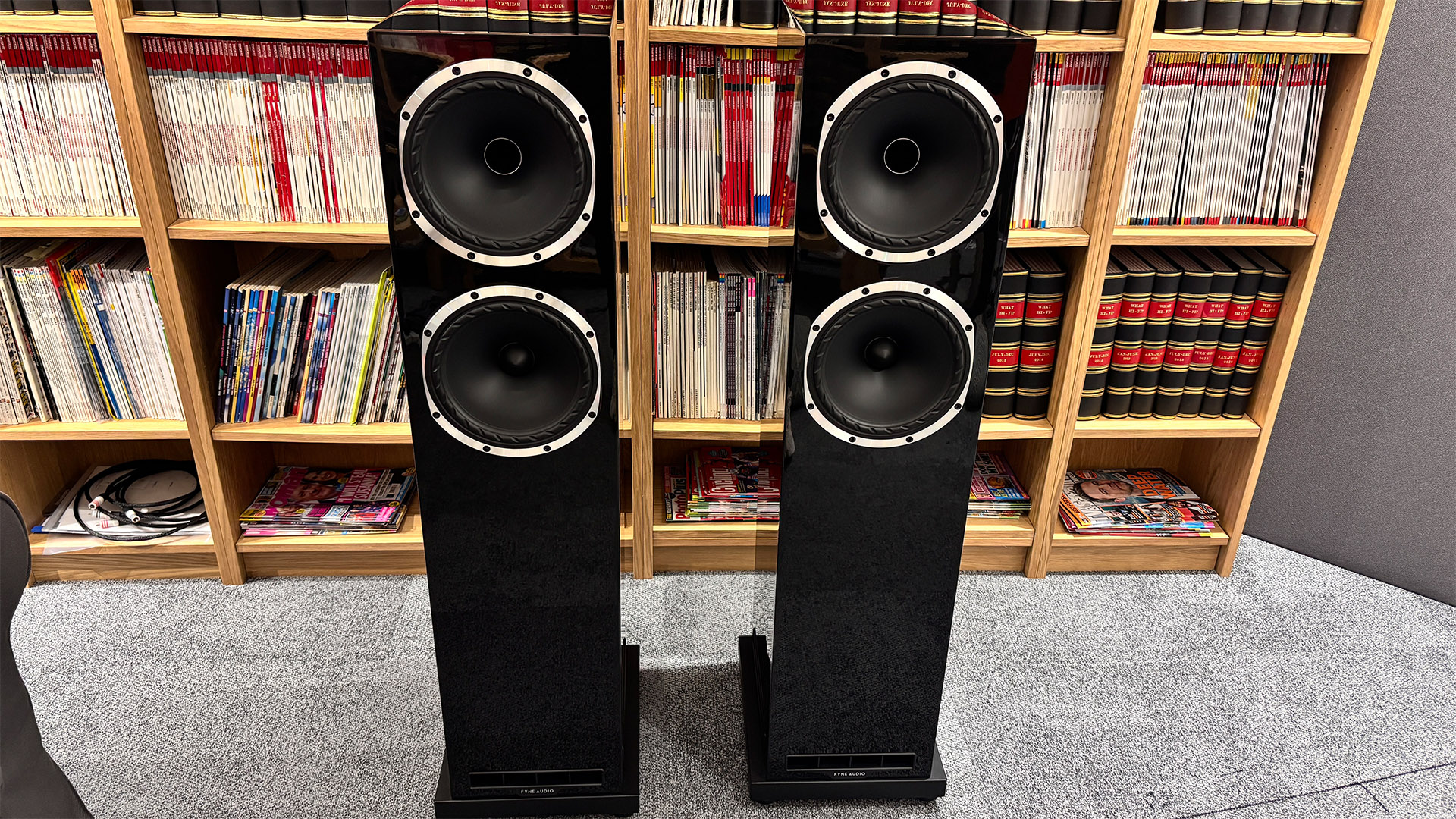What Hi-Fi? Verdict
Time has taken its toll on this player, which has been overhauled by some more affordable rivals
Pros
- +
Even-handed tonal balance
- +
Good range of connections
- +
Easy to use
- +
Well designed app
Cons
- -
Increased price
- -
Lacking ultimate detail
- -
Not dynamic enough
- -
Could be more spacious
- -
Loose sense of rhythm
Why you can trust What Hi-Fi?
When a product has been on the market for nearly three years, and has gone up in price quite a bit in that time (£430 to £500), it must have seriously good sound to remain competitive.
BlueSound’s Node 2 arrived in our testing rooms in 2015, and we were impressed with its performance. Even now, it remains a key component of the company’s multi-room system that gained a What Hi-Fi? Award in 2017.
But for those who prefer to cherry-pick the best products and building a hi-fi system from the best multiple manufacturers have to offer, the Node 2 still needs to impress.
Ultimately, with a price increase and over two year's-worth of rival products that have arrived to take it on, does this streamer still manage top-notch performance?
Build
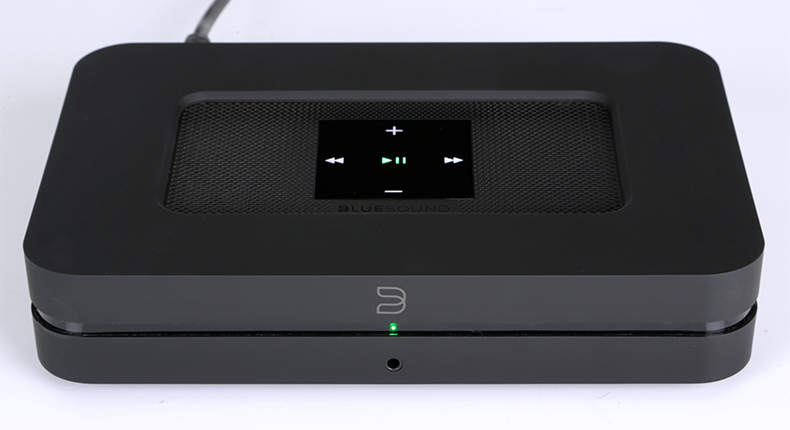
The Node 2 is, as the name suggests, an upgrade to the original Node - the most obvious change being the design.
There has been a big departure from the previously striking, but rather plasticky look, and it is replaced by something altogether more understated and rack-friendly.
No longer a shiny cube, the Node 2 is now a slim, flat box with a matte finish; a little shorter, and about double the thickness, of a MacBook Air.
The latest hi-fi, home cinema and tech news, reviews, buying advice and deals, direct to your inbox.
There’s not much more to the design – the touch-sensitive controls for play/pause, volume and track sit on the top, with an LED on the front that will flash certain colours to help you during set-up.
MORE: Best music streamers 2018
Features
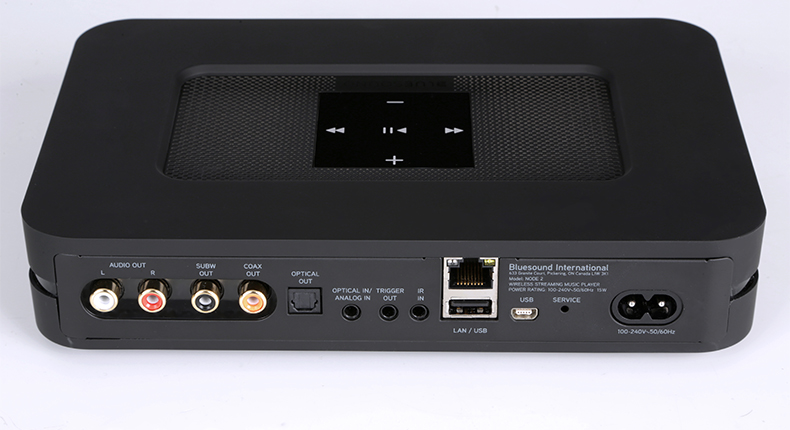
With regards to connectivity, the Node 2 has all the ports you would expect on a modern streamer. There is an optical and analogue input, an optical output, as well as coaxial digital ports, and type A USB port too.
Bluetooth 4.0 with aptX (for ‘CD-like resolution) is on board, and there’s also a built-in headphone amp and dedicated headphone output.
The Node 2 is capable of playing uncompressed FLAC, ALAC and WAV files up to 24-bit/192kHz, as well as other popular formats such as MP3, AAC, WMA and AIFF. If you’ve got it, the likelihood is that the Node 2 can play it.
There’s no remote in the box, so you’ll need to download the Bluesound app (available for iOS and Android) to control the Node 2’s playback. This opens up the Node to a whole host of streaming services, including Amazon Music, Spotify, Deezer, Qobuz, Tidal and an array of digital radio stations.
If you bought the Node 2 as part of Bluesound’s multi-room system, it’s here that you’ll be able to see and control all your other devices as well.
Using the app is straightforward and simple, while recent updates to the software means that connecting to wi-fi (which previously was browser-based) can now be done within seconds from your phone.
MORE: High-resolution audio – everything you need to know
Sound
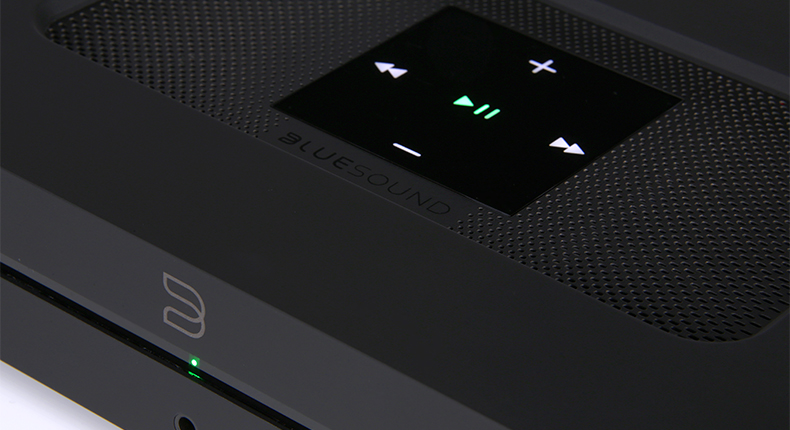
The Node 2’s feature list, design and build quality should, in theory, make it a streamer to compete with the big boys in the market. To its credit, the Node 2 has an easy-going tonal balance, each element of the frequency range being kept in line.
You can listen to a range of music sources – from low-resolution Spotify streams to hi-res audio files – for hours, without tiring of the sound.
It manages to reach down into the lower frequencies with enough gusto as well, providing a solid sound when it comes to deep horns, twanging bass guitars and good old-fashioned drum solos.
The Node 2 has a decent punch behind it at the low end, and the changing intensity from quiet sounds to loud blasts doesn’t get in the way of you understanding the artist’s intentions.
MORE: Best streaming services 2018
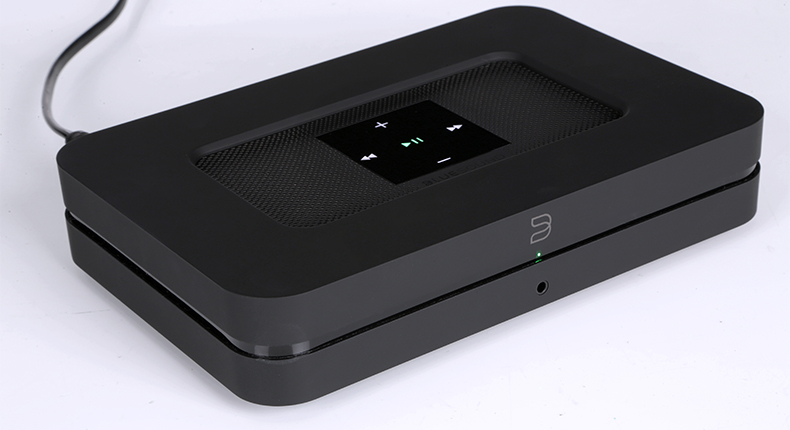
But it doesn’t sound like a true rendition, and that stops the Node 2 from being able to contend with other streamers in its price range.
We play a hi-res stream of Old Friends from the score of The Hobbit: An Unexpected Journey – connected to the Node 2 via our Naim server – and notice that, while the streamer has a decent handling of dynamics, it’s not as bold a performance as we expect.
The sweeping forces, as the strings rise boldly upwards to then softly fall way and hover in the air, aren’t handled with enough dexterity to reveal the sense of adventure in the track.
The wooden drumbeats that come in midway through the song don’t have the earthy texture they should. The Node 2 skims the surface of the notes, but isn’t able to dig deeper and provide enough detail.
It’s the difference between running your hand across the top of the soil and plunging your hand in to get some dirt under your fingernails.
MORE: Best multi-room systems 2018

These characteristics remain as you change to lower quality streams, too. We stream Shelter by The xx through Tidal and, while the Node 2 performs adequately, we’re left hankering after the sense of space we know is in the track.
Compared to something like the Arcam rPlay, which is now priced around £330, the Node 2 can’t keep up. A quick blast of Can’s Spoon, which features a sporadic array of fills and pads from drummer Jaki Liebezeit underneath light vocalisations, shows the rPlay has a better sense to timing and greater clarity in the midrange.
Although the Node 2 is an adequate performer, if you know you can get a better sound for a cheaper price, why wouldn’t you?
Verdict
Ultimately, for those that are tied into BlueSound’s system there are still clear benefits behind buying the Node 2.
Its control app works better than that of its Arcam competitor, it’s much more convenient to manage all your products from one application, and built-in Bluetooth is a nice touch too.
However, if your aim is to get the best sound possible, regardless of manufacturer, the Node 2 will leave you wanting – and that’s only emphasised when you consider that its price has increased by £70, while at the same time the price of competitors such as the Arcam rPlay has fallen from £400 to £330. That’s a £170 difference, and it’s not to be sniffed at.
It’s rare that a product goes from a five star rating straight to a three, but considering you can get greater audio quality for significantly less cash, there are no two ways about it: the Node 2 ain’t what it used to be.
See all our Bluesound news and reviews
What Hi-Fi?, founded in 1976, is the world's leading independent guide to buying and owning hi-fi and home entertainment products. Our comprehensive tests help you buy the very best for your money, with our advice sections giving you step-by-step information on how to get even more from your music and movies. Everything is tested by our dedicated team of in-house reviewers in our custom-built test rooms in London, Reading and Bath. Our coveted five-star rating and Awards are recognised all over the world as the ultimate seal of approval, so you can buy with absolute confidence.
